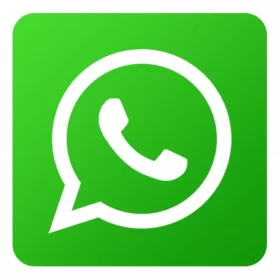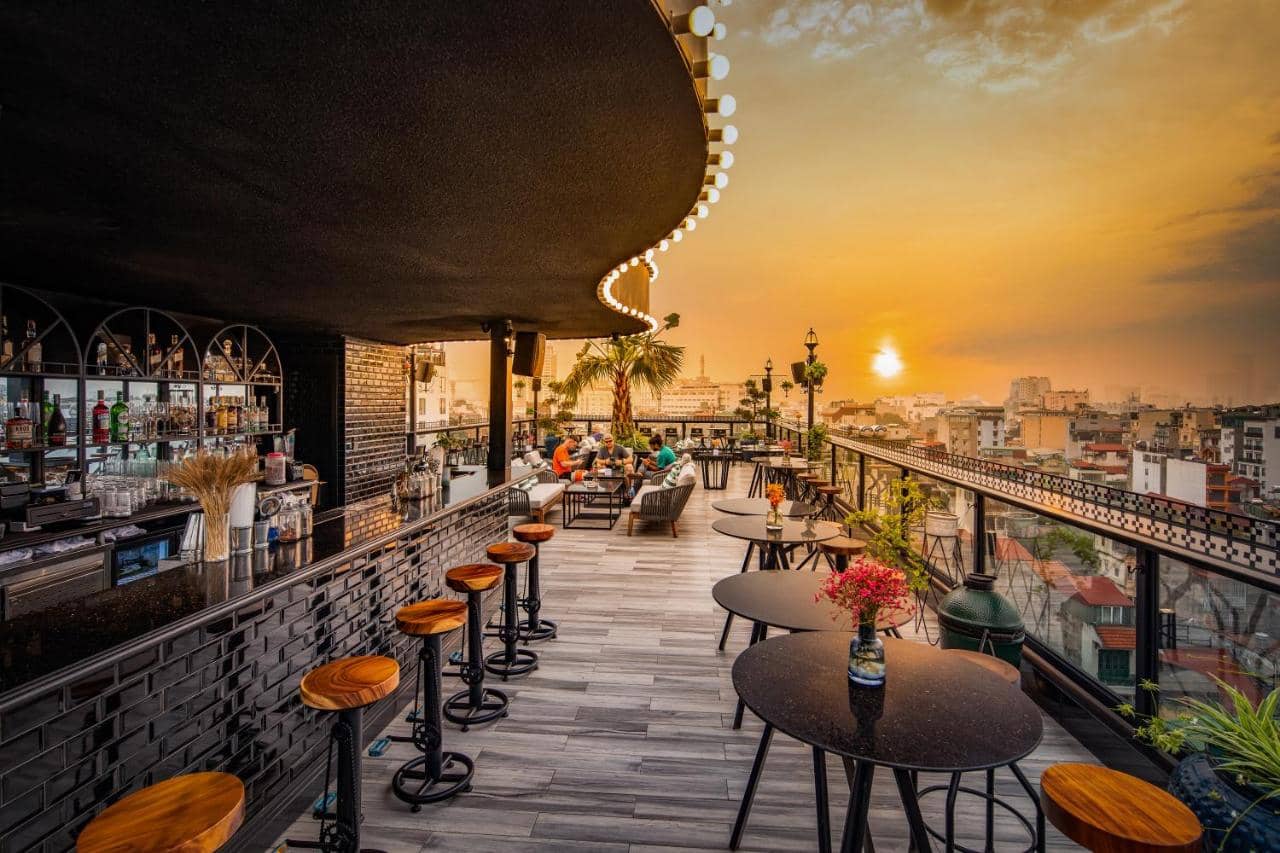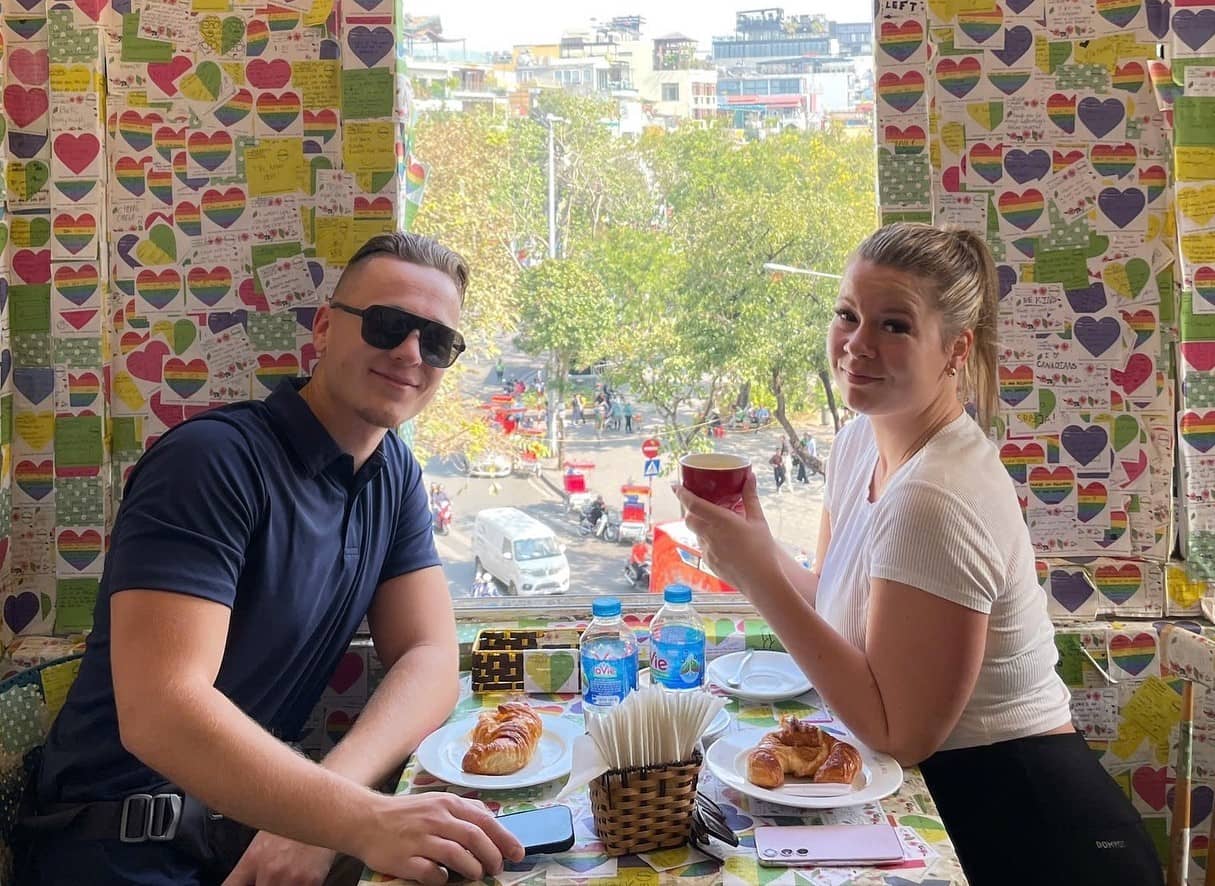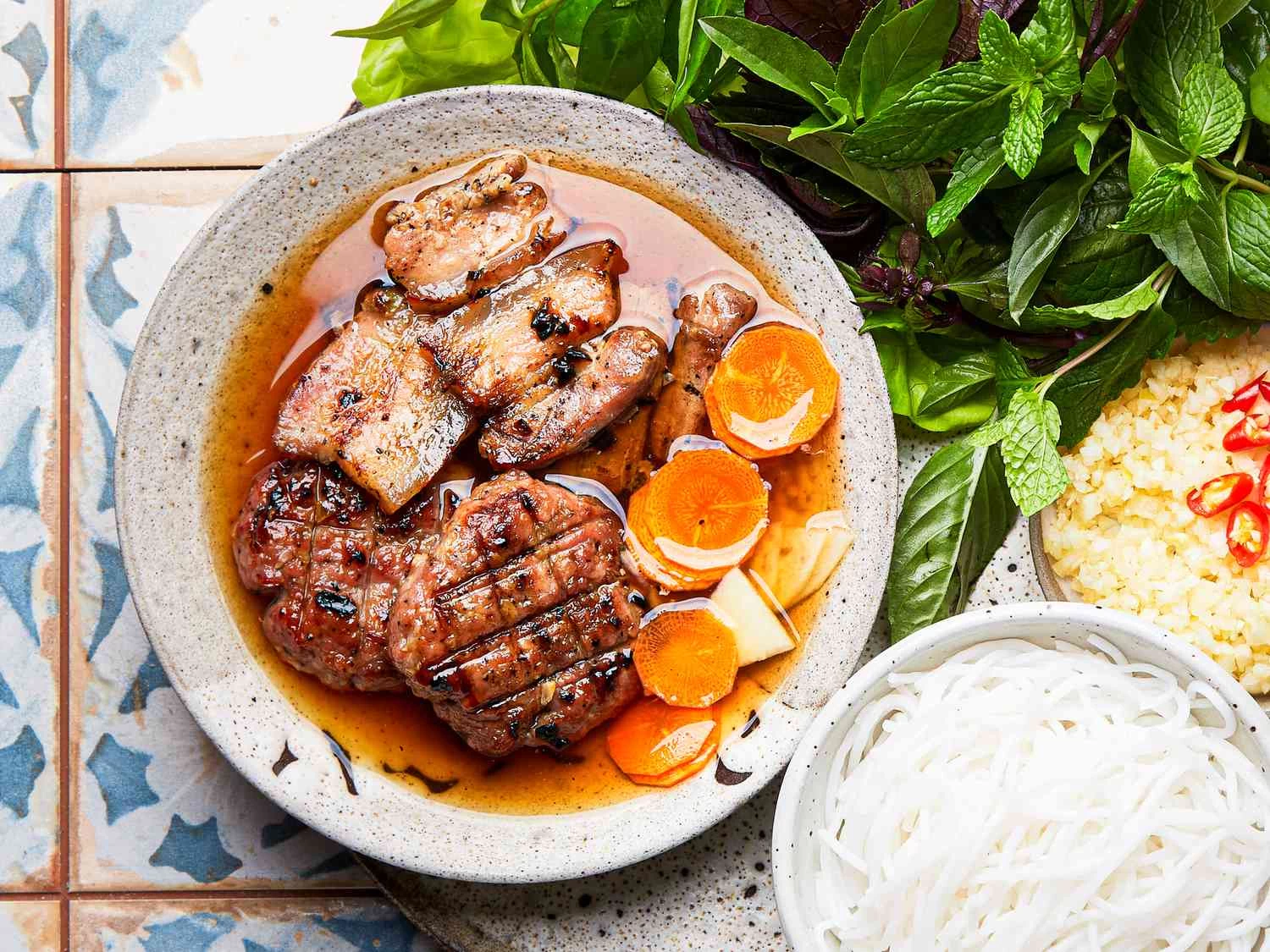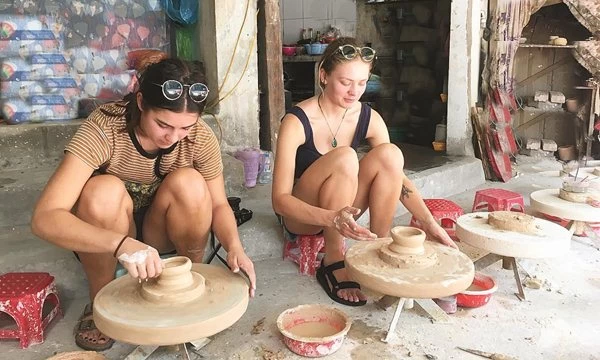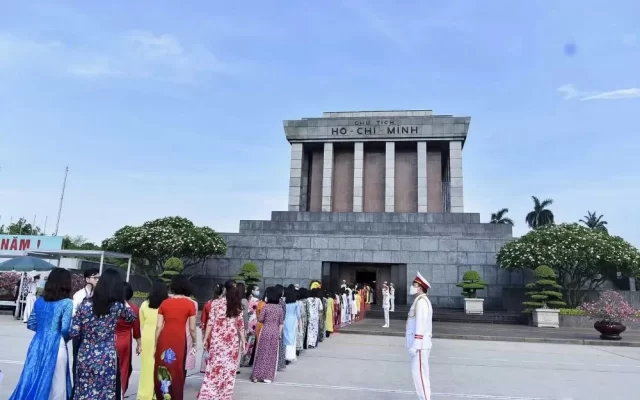
Let’s explore the place that every Vietnamese person wants to visit once in their life.
Discover the Ho Chi Minh Mausoleum in Hanoi, an iconic tribute to the nation’s revered leader. Learn about its rich history, stunning architectural design, and essential visitor tips. Explore opening hours, dress codes, and the ceremonial changing of the guard. Plan your visit with Ula Travel to this historic landmark and uncover the cultural significance of this must-see destination.
I. Introduction to the Ho Chi Minh Mausoleum
1. Location of the Ho Chi Minh Mausoleum
The Ho Chi Minh Mausoleum is located in the heart of Hanoi; it stands prominently in Ba Dinh Square. This iconic structure is dedicated to the memory of Ho Chi Minh, the revered leader of Vietnam’s struggle for independence and a symbol of the nation’s unity and revolutionary spirit.
2. Construction History of the Ho Chi Minh Mausoleum
The construction of the Ho Chi Minh Mausoleum began on September 2, 1973, and was completed on August 29, 1975. The mausoleum was designed by a team of Soviet architects, led by architect Vladimir S. Korochenko, in collaboration with Vietnamese architects.
The design was inspired by the traditional Vietnamese architecture of wooden temples and pagodas, combined with elements of Soviet monumentalism, reflecting the deep respect for Ho Chi Minh and the strong relationship between Vietnam and the Soviet Union at the time. The mausoleum was built to honor the leader’s legacy and to accommodate the large numbers of people wishing to pay their respects.
3. The role of the Ho Chi Minh Mausoleum
The Ho Chi Minh Mausoleum serves several important purposes. It is a site of national significance where Vietnamese people and international visitors can pay their respects to Ho Chi Minh, who played a pivotal role in the country’s history.
The mausoleum is not only a place of remembrance but also a symbol of the Vietnamese revolutionary struggle and the enduring legacy of Ho Chi Minh’s ideals. It stands as a testament to his leadership and vision for a unified and independent Vietnam.
The mausoleum’s role extends beyond a mere memorial; it is a focal point for national ceremonies and official events, including state visits and commemorations of significant historical milestones.
The respect and reverence shown at the mausoleum underscore Ho Chi Minh’s lasting impact on Vietnamese society and his contributions to the nation’s identity and sovereignty.
II. Architecture Features of the Ho Chi Minh Mausoleum
1. Architectural Style
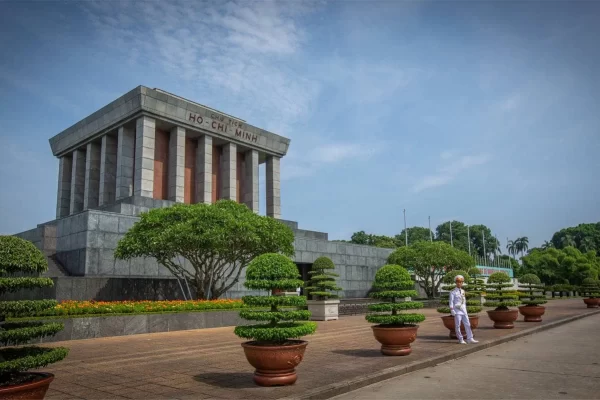
The architecture of Ho Chi Minh’s mausoleum shows majesty and stability.
The Ho Chi Minh Mausoleum is a striking example of Soviet-inspired architecture combined with traditional Vietnamese elements. The mausoleum reflects the monumental and austere style typical of Soviet mausoleums.
The design is influenced by classic elements of neoclassical architecture, characterized by its grand, rectangular structure, which is both imposing and solemn. The exterior of the mausoleum is built with gray granite, contributing to its robust and monumental appearance.
The architectural style emphasizes symmetry and formality, embodying the reverence for Ho Chi Minh while remaining consistent with the broader architectural trends of the time. The structure also incorporates traditional Vietnamese motifs subtly into its design, ensuring it aligns with local cultural values.
Click here: Hanoi Day Trip
2. Main Areas
- The Mausoleum Hall: The central area where the embalmed body of Ho Chi Minh is displayed lies in the main hall of the mausoleum. The hall is meticulously designed to create a sense of reverence and respect. The body is housed in a glass sarcophagus, and the surrounding area is kept in a serene and dignified state.
- The Viewing Platform: Visitors can view the mausoleum from a raised platform, which allows them to appreciate the full grandeur of the structure. This area is accessible to the public and offers a clear view of the mausoleum’s facade and the ceremonial changing of the guard.
- The Ceremonial Plaza: In front of the mausoleum is a large, open plaza used for state ceremonies and military parades. The plaza is an integral part of the mausoleum complex, providing a space for public gatherings and official events and enhancing the solemnity and significance of the site.
- The Administrative Building: Located to the sides of the main mausoleum, these buildings house administrative offices and facilities for the staff who manage the mausoleum’s operations. The design of these buildings is consistent with the overall architectural style but less ornate than the main structure.
3. Notable Features
- Granite Facade: The mausoleum is clad in gray granite, a material chosen for its durability and solemn appearance. The granite gives the building a dignified and enduring quality, reflecting the respect and reverence for Ho Chi Minh.
- Symbolic Elements: The mausoleum’s design includes symbolic elements, such as the five-pointed star and the large pillars, which convey a sense of strength and permanence. The five-pointed star is a nod to communist ideology and reflects Ho Chi Minh’s role in the country’s history.
III. Opening Hours and Visiting Rules
1. Opening Hours of the Ho Chi Minh Mausoleum
- In the summer, from April to the end of October, the mausoleum is open from 7:30 AM to 10:30 AM. On Saturdays, Sundays, and public holidays, it is open from 7:30 AM to 11:00 AM.
- In the winter, from November to the end of March the following year, the mausoleum is open from 8:00 AM to 11:00 AM. On Saturdays, Sundays, and public holidays, it is open from 8:00 AM to 11:30 AM.
The Ho Chi Minh mausoleum is usually open on weekday mornings except for Mondays and Fridays. However, on special days such as the first day of the Lunar New Year, May 19th (President Ho Chi Minh’s birthday), and September 2nd (National Day) that fall on a Monday or Friday, the mausoleum will still be open.
2. Admission Fees to the Ho Chi Minh Mausoleum
- The entrance fee for foreign visitors is 25,000 VND per visit. An additional 25,000 VND is charged for visiting the Ho Chi Minh Stilt House, where President Ho Chi Minh used to live.
3. Visiting Rules
- Dress Code: Visitors are required to dress modestly, with shoulders and knees covered. This dress code is strictly enforced to maintain the respectful atmosphere of the mausoleum.
- Behavior: Respectful behavior is expected at all times. Loud conversations, photography, and touching the exhibits are prohibited. Visitors are asked to remain silent and respectful while inside the mausoleum.
- Security Check: All visitors must pass through a security check before entering the mausoleum. Bags and personal items may be subject to inspection to ensure the safety and security of the site.
- Guided Tours: While self-guided tours are allowed, visitors are encouraged to join a guided tour for a more comprehensive understanding of the mausoleum’s history and significance. Guided tours are often available in multiple languages.
4. Visiting the Ho Chi Minh Mausoleum
After completing the procedures, you will line up at Ba Dinh Square to wait for your turn. If you visit on a public holiday, it can be very crowded with long lines, so the wait may be longer.
However, since visitors are only allowed to walk through the mausoleum in a single loop without stopping to take photos or videos, the visit is relatively quick. Inside the mausoleum, you should follow the signs or the crowd in front of you. Please note that children under 3 years old are not allowed to enter the mausoleum.
IV. Activities at the Ho Chi Minh Mausoleum
1. Flag-Raising Ceremony
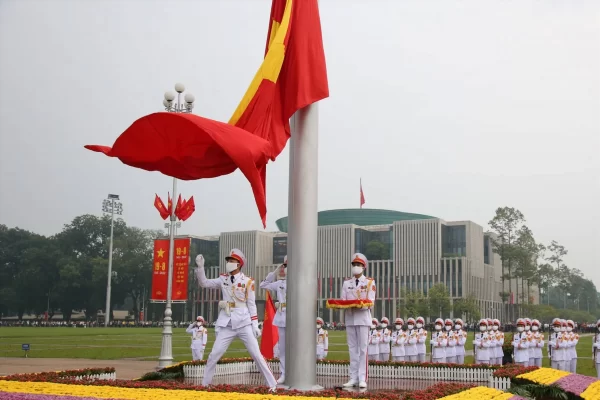
Flag-Raising Ceremony at the Ho Chi Minh Mausoleum
The flag-raising ceremony is a national ritual conducted every morning at 6:00 a.m. in front of the Ho Chi Minh Mausoleum. The ceremony begins with the flag-raising procession departing from the rear of the mausoleum.
Leading the procession is the Victory Flag, followed by a unit of 34 soldiers, representing the first 34 fighters of the Vietnam Propaganda Liberation Army. The procession marches to the front to the music of the song “Marching Under the Flag” to the base of the flagpole.
Three soldiers from the flag team will move to the flagpole to prepare for the flag-raising ritual. At this point, the mausoleum doors will begin to open.
When signaled, the flag is unfurled and raised to the top of the flagpole to sing the national anthem. After the flag-raising, the unit of soldiers will march around the front of the mausoleum and conclude the ceremony.
2. Flag-Lowering Ceremony
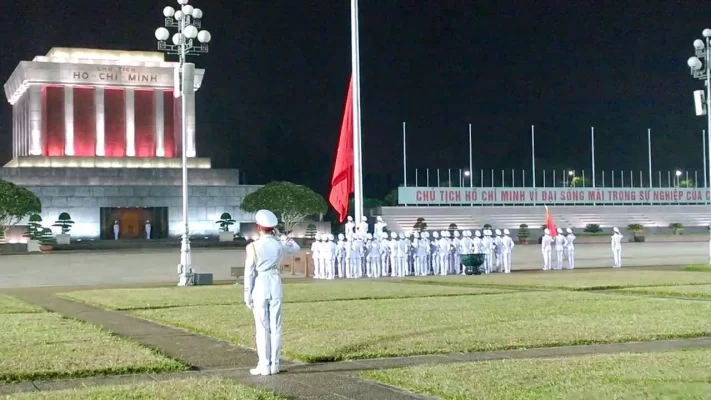
Flag-Lowering Ceremony
The flag-lowering ceremony takes place daily at 9:00 p.m., with a ritual similar to the flag-raising ceremony. The ceremony is conducted with the utmost solemnity and reverence by the soldiers, maintaining the dignity of the national flag. On special occasions, such as National Day or President Ho Chi Minh’s birthday, these ceremonies become even more sacred and significant.
3. Guard Changing Ceremony
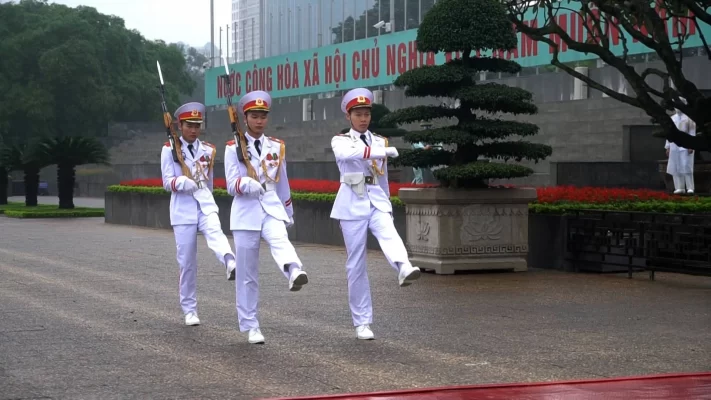
Soldiers change guard every 2 hours.
The guard changing ceremony at the Ho Chi Minh Mausoleum is a highly ceremonial event that takes place every two hours. This tradition involves the replacement of the guards who have been stationed at the mausoleum, ensuring continuous honor and vigilance.
V. Nearby Attractions
1. Presidential Palace
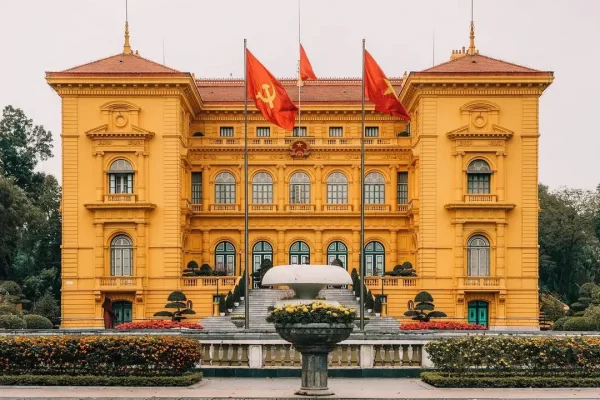
Presidential Palace
The Presidential Palace is part of the mausoleum complex and was constructed in classic French architecture. Originally built as a residence for the Governor-General of Indochina, it became President Ho Chi Minh’s workplace from 1954 until his passing in 1969, following the departure of French colonialists.
Today, the Presidential Palace serves as a venue for welcoming dignitaries and hosting important state events. The palace grounds are lush with greenery, including many large, ancient trees, creating a serene and tranquil environment.
- Location: Located at 2 Hoang Vuong Street, Ba Dinh District, Hanoi. It is situated close to the Ho Chi Minh Mausoleum and can be easily reached by a short walk or taxi ride.
2. Ho Chi Minh’s Stilt House
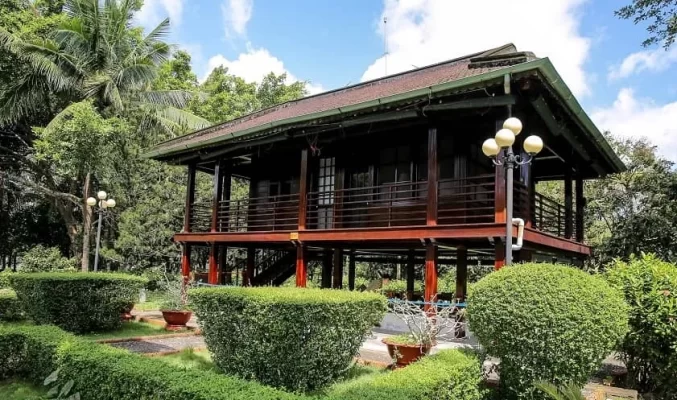
Ho Chi Minh’s Stilt House – where President Ho Chi Minh used to live and work.
Ho Chi Minh’s Stilt House is a fascinating historical site that provides a glimpse into the personal life of President Ho Chi Minh. This traditional wooden house was built on stilts to resemble the traditional homes of Vietnam’s ethnic minorities. It reflects Ho Chi Minh’s commitment to living simply and close to nature.
The house is furnished with modest but functional items, illustrating his ascetic lifestyle and dedication to his revolutionary cause. The adjacent fish pond, surrounded by lush greenery, was a place where Ho Chi Minh enjoyed quiet moments of relaxation and reflection. The site serves as a testament to his humility and connection with Vietnamese culture.
- Location: Situated within the grounds of the Ho Chi Minh Mausoleum Complex, at 19 Ngoc Ha Street, Ba Dinh District, Hanoi. It is easily accessible from the Mausoleum.
- Entrance Fee: Visiting the Stilt House and Fish Pond is included in the admission fee for the Ho Chi Minh Mausoleum Complex. There is no additional charge.
3. Ho Chi Minh Museum
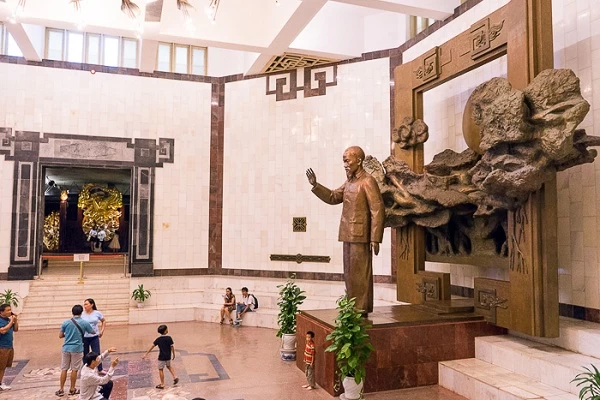
Visiting the Ho Chi Minh museum is an interesting experience
The Ho Chi Minh Museum is dedicated to preserving and showcasing the life, achievements, and legacy of President Ho Chi Minh. The museum’s collection spans various aspects of Ho Chi Minh’s life, from his early years to his role in the struggle for Vietnamese independence.
The exhibits include personal memorabilia, revolutionary documents, and a variety of multimedia presentations that provide a comprehensive view of his contributions to Vietnam.
The museum’s architecture is also noteworthy, featuring a design that symbolizes the journey and spirit of Ho Chi Minh. It serves as a vital educational resource for understanding Vietnam’s modern history and the profound impact of Ho Chi Minh’s leadership.
- Location: Located at 19 Ngoc Ha Street, Ba Dinh District, Hanoi.
- Entrance Fee: The entrance fee is approximately 40,000 VND (about $1.70 USD). Tickets can be purchased at the museum’s entrance.
4. One Pillar Pagoda
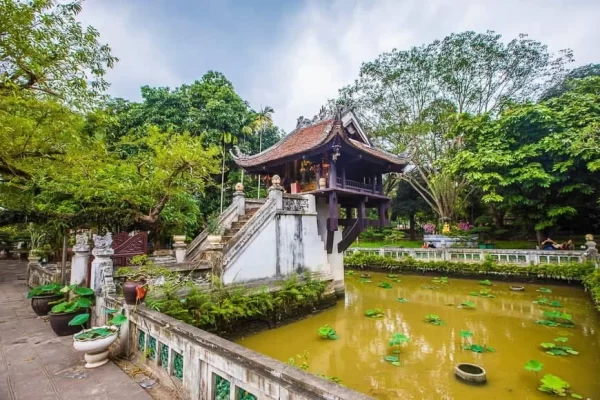
One Pillar Pagoda
The One Pillar Pagoda is an iconic Buddhist temple renowned for its unique architectural design. Built in 1049 during the reign of Emperor Ly Thai Tong, the pagoda is constructed on a single stone pillar that rises out of a square lotus-shaped pond, symbolizing purity and enlightenment.
The pagoda is an important cultural and historical symbol of Hanoi and Vietnam, often associated with the legend of the emperor’s dream and the Buddhist ideals of simplicity and unity. The pagoda has been restored several times throughout its history but retains its historical charm and spiritual significance. It is a popular destination for visitors seeking to experience traditional Vietnamese architecture and Buddhist culture.
- Location: Situated at 2RPM+8CX, One Pillar Pagoda Ward, Doi Can, Ba Dinh, Hanoi, near the Ho Chi Minh Mausoleum and the Presidential Palace.
- Entrance Fee: Entry to the One Pillar Pagoda is free of charge. However, donations are welcomed to support its maintenance.
Learn more about: Things to do in Hanoi
VI. Visiting Tips and Recommendations
1. Plan Your Visit Wisely
- Best Time to Visit: To avoid large crowds, try to visit early in the morning, especially on weekdays. The mausoleum can get particularly busy during public holidays and weekends.
- Duration: Allocate about 1-2 hours for your visit to fully experience the mausoleum and its surroundings. This allows ample time for waiting in line, the security checks, and the actual tour.
2. Dress Code and Behavior
- Dress Code: Dress modestly as a sign of respect. Visitors are required to wear appropriate clothing covering their shoulders and knees. Avoid wearing hats and sunglasses inside the mausoleum.
- Behavior: Maintain a respectful demeanor while inside the mausoleum. Keep your voice low and avoid any disruptive behavior. Photography is generally not permitted inside the mausoleum, so focus on appreciating the experience rather than capturing images.
3. Security and Check-In Process
- Security Checks: Expect thorough security screenings upon arrival. Large bags, food, and drinks are not allowed inside, so it’s best to leave these items at a nearby locker or hotel.
- Entry Requirements: Ensure you bring a valid ID with you, as it may be required for entry. Follow the instructions given by the security personnel and staff.
In conlcuison, the Ho Chi Minh Mausoleum is a significant historical and cultural landmark in Hanoi, Vietnam, dedicated to honoring President Ho Chi Minh, a key figure in the nation’s history. This imposing structure not only serves as a final resting place for the revered leader but also stands as a testament to Vietnam’s rich heritage and revolutionary past.
For international visitors, the mausoleum offers a deeply respectful and insightful experience, showcasing the architectural grandeur and solemn atmosphere that reflect the profound respect held for Ho Chi Minh. As you explore this site, you gain a deeper appreciation for Vietnam’s historical journey. A visit to the Ho Chi Minh Mausoleum is an essential part of experiencing Hanoi, leaving you with a lasting impression of Vietnam’s cultural and historical legacy.
See more: Hanoi Travel Tips

